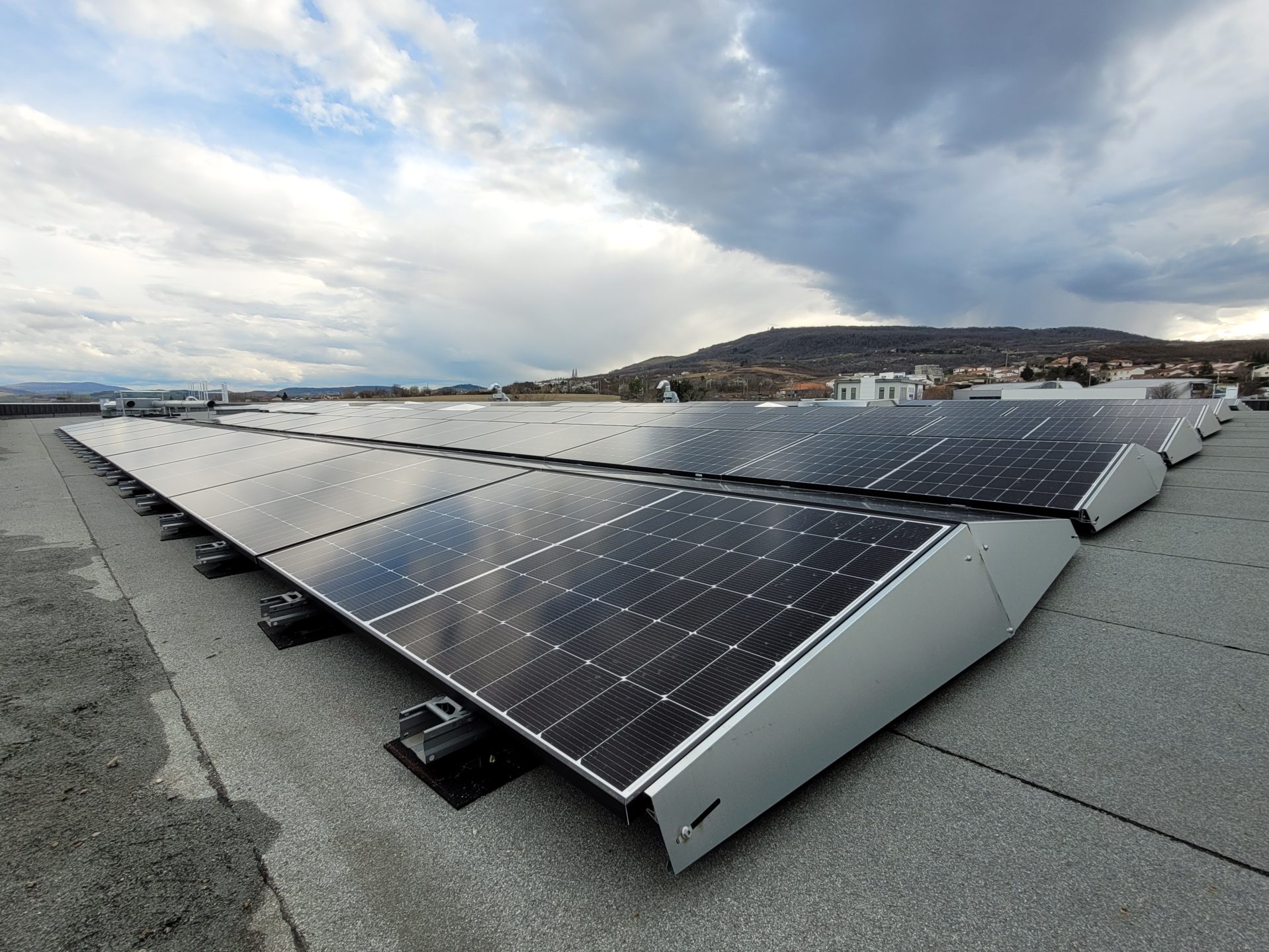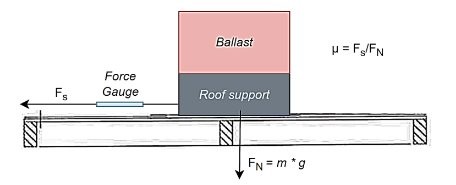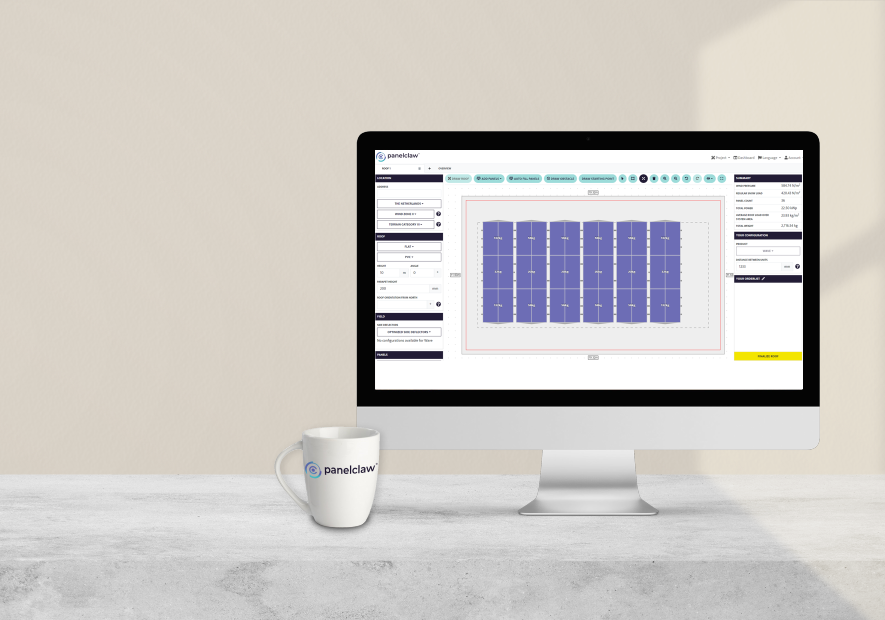
Assessing the friction between roof covering and Wave friction mat
The stability of ballasted PV mounting systems on flat roofs depends primarily on the total and evenly distributed weight of the system — including modules, the mounting system, and additional ballast — as well as environmental factors like wind and snow loads. Proper installation requires verification that the building structure can adequately support this weight and that the roof construction is suitable.
One important stability factor is the interaction the roof covering and the mounting system. This interaction is quantified by the coefficient of static friction, which is directly incorporated into structural calculations. For this reason, it is essential to have a representative coefficient of static friction for each specific case. A way to achieve this is by measuring this coefficient directly on the installation site.
A test set to measure the friction coefficient
This test is a straightforward and precise method for determining the friction coefficient using several measurement points. The setup includes a spring scale, a Wave roof support, a ballast plate and the two versions of the friction mat (for PVC and non-PVC roofs). With the test you can effectively measure the friction coefficient between the Wave mounting system and various roof coverings such as ..bitumen, concrete, EPDM, PVC and TPO.


Friction coefficient explained
The friction coefficient, represented by the symbol µ, is a dimensionless number that represents the ratio between the force of friction and the normal force acting between two surfaces in contact, indicating how easily they slide against each other.
Friction between the roof surface and the mounting system helps resist sliding forces. The higher the coefficient of friction (μ), the more resistant the system is to movement under lateral loads (like wind pressure).
- High friction (e.g., rough membrane, textured surface) → More resistance to sliding → Less ballast needed.
- Low friction (e.g., smooth membrane, dusty or icy surface) → Less resistance to sliding → More ballast needed.
Check the manual or contact us if you require any clarification or assistance with this process.

PanelClaw Calculator
Next step is to enter the lowest friction coefficient value calculated for the roof area in the PanelClaw Calculator. You will find the input field if you have enabled expert mode in your account settings. An input field will then appear under ‘roof’ where you can enter the value. The calculator is now using this value for a ballast calculation fitting with your roof.
Interested in the Friction Coefficient Measuring Kit? You can order one by emailing sales@panelclaw.eu or contacting your PanelClaw sales representative.



